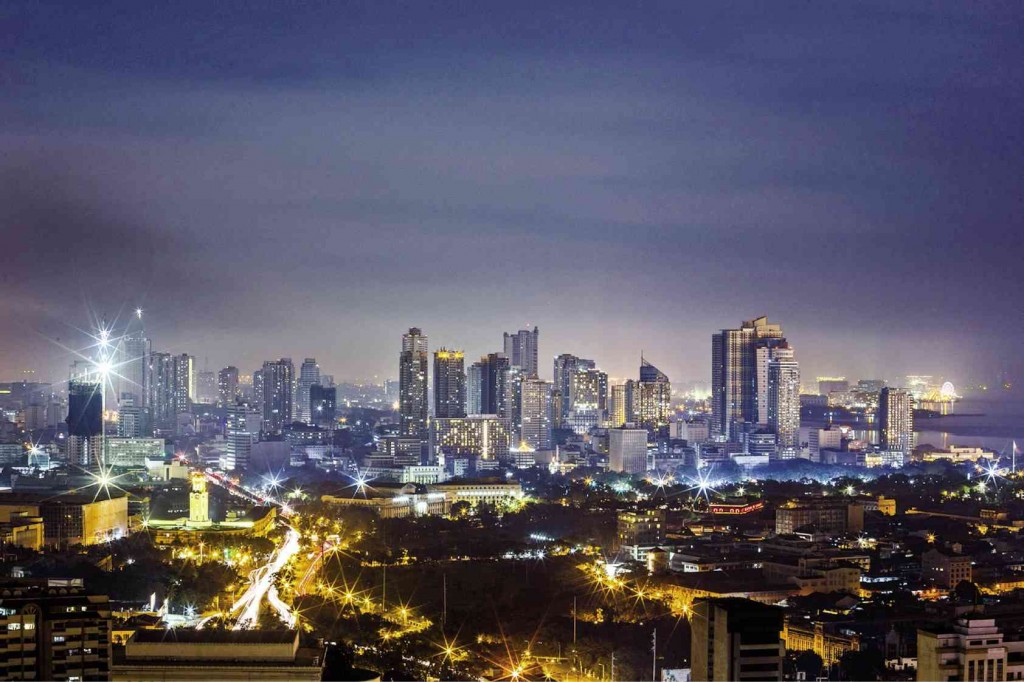
Metro Manila by night. (INQUIRER FILE PHOTO / JILSON SECKLER TIU)
MANILA — The World Bank expects the Philippines to sustain strong economic growth in the next three years and outperform most of its Asian neighbors.
“In the Philippines, growth, led by accelerated public and private investment, is expected to remain at just under 7 percent in 2017-2019—significantly higher than the long-term average of 4.3 percent,” the World Bank said in its June 2017 Global Economic Prospects report released Monday.
Last April, the World Bank forecast the Philippines’ gross domestic product (GDP) to grow 6.9 percent this year, or within the government’s 6.5-7.5 percent target range.
For 2018, the World Bank projected 6.9-percent GDP growth, before slightly slowing to 6.8 percent in 2019.
The World Bank’s forecasts for 2018 and 2019 were below the government’s target of 7-8 percent from 2018 to 2022.
In the East Asia and Pacific region, the 2018 6.9-percent growth forecast for both the Philippines and Cambodia was the second fastest after Laos’ 7 percent.
“In the Philippines, expansionary fiscal policy has boosted capital formation, while robust remittances, credit growth, and low inflation have supported private consumption,” the World Bank said.
“Policies in the Philippines remain accommodative, despite rapid credit growth, accelerated inflation, widening fiscal deficits, and falling current account surpluses,” the World Bank added.
Across East Asia and Pacific as well as South Asia, “solid domestic demand, strong infrastructure spending, foreign direct investment-led investment into highly competitive manufacturing sectors and services, and rising global demand are benefiting many countries such as Bangladesh, Cambodia, India, the Philippines, and Vietnam,” the World Bank noted.
Last month, the government reported that GDP growth eased to 6.4 percent in the first quarter, the slowest expansion since the 6.3 percent posted in the fourth quarter of 2015.
The government had blamed the lower-than-expected first-quarter figure to slower government spending, higher prices of consumer goods, as well as the lack of a boost from election-related expenditures unlike in 2016.
The Philippines nonetheless remained among the fastest-growing across emerging Asian economies during the first three months, only behind China’s 6.9-percent expansion. SFM

